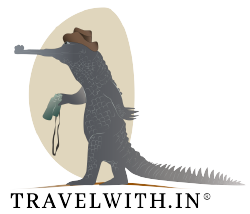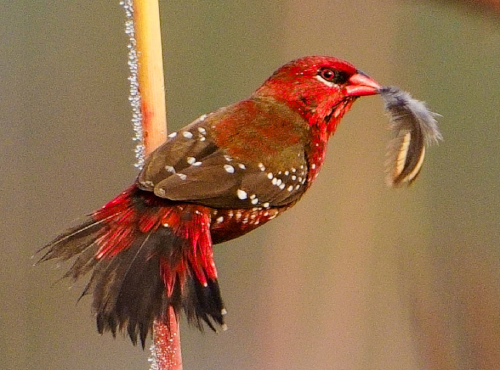Spanning just 35 sq km, Blackbuck National Park (BNP) also referred to as Velavadar National Park (VNP) in Gujarat is one of the smallest national parks in India. The diminutive size of the national park should not by any means deter you from visiting it, read on and you will know why BNP is one of the best places in the country to see some of India’s lesser known wildlife in their natural habitat.
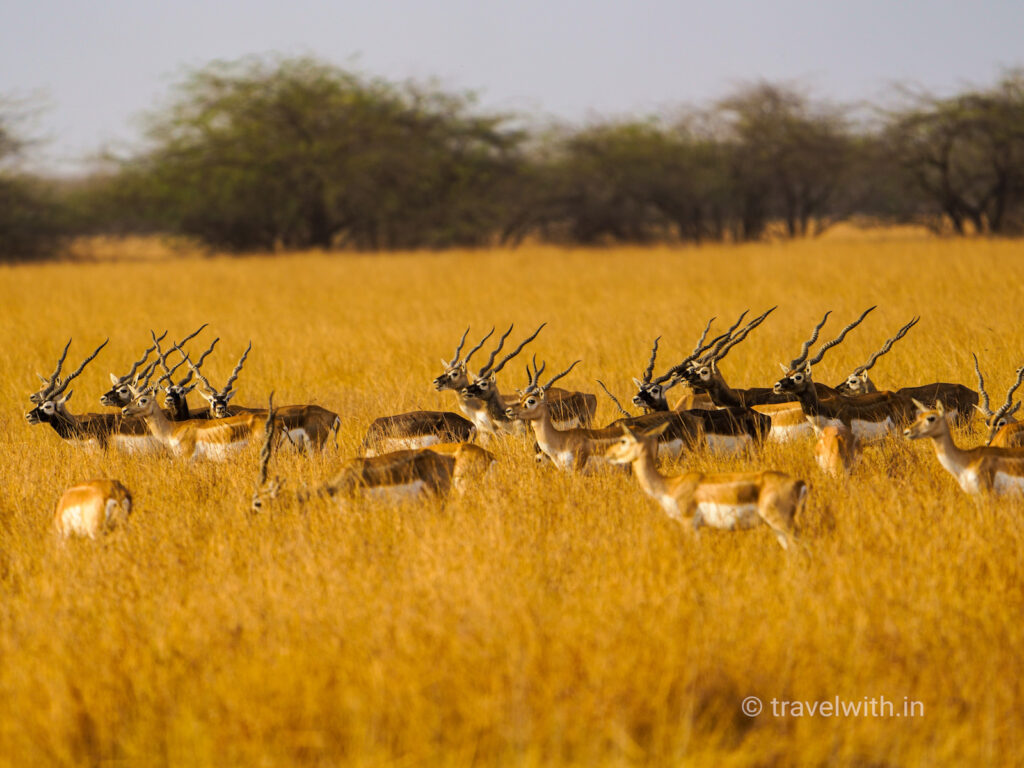
Blackbucks in Velavadar’s Grasslands
It is believed that in 1960s there were just a couple of hundred blackbucks left in the grasslands and surrounding agricultural lands. This was mainly due to rampant hunting and conversion of grasslands in to agricultural land. The area was declared a national park in 1976 and since has witnessed one of the best conservation success stories with the blackbuck population rebounding to approximately 3,000.
With the population of blackbucks increasing the number of Indian Grey Wolves (the apex predator of the Park) has rebounded too along with that of the Striped Hyenas and close to 300 species of birds and several species of reptiles such as fan-throated lizard can also be spotted in the Park.
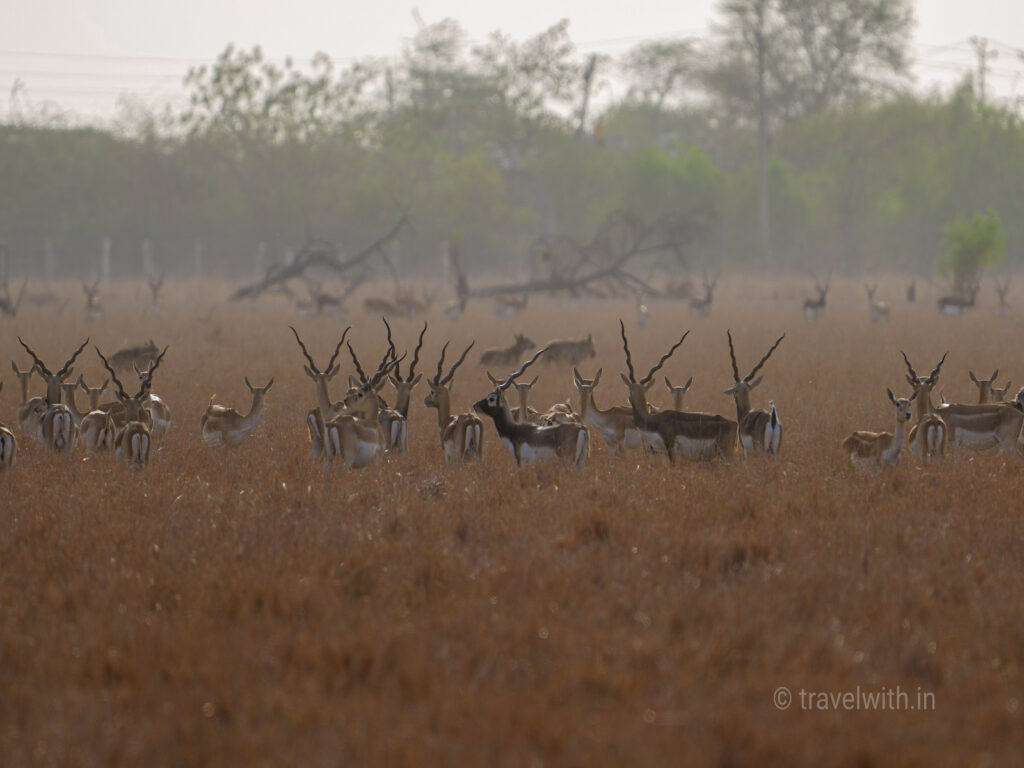
Predator and Prey
Wolves of Velavadar
It is believed that BNP is the largest communal roosting site in the world for Harriers which arrive in August / September for the winter season all the way from Europe and Africa.
The Park is open from October 15 to June 15. It then closes for the monsoon season as the Park falls in the low-lying region also known as Bhal in Gujarati. This area is also the delta of a number of rivers of south Gujarat hence prone to flooding in the event of continuous rainfall.
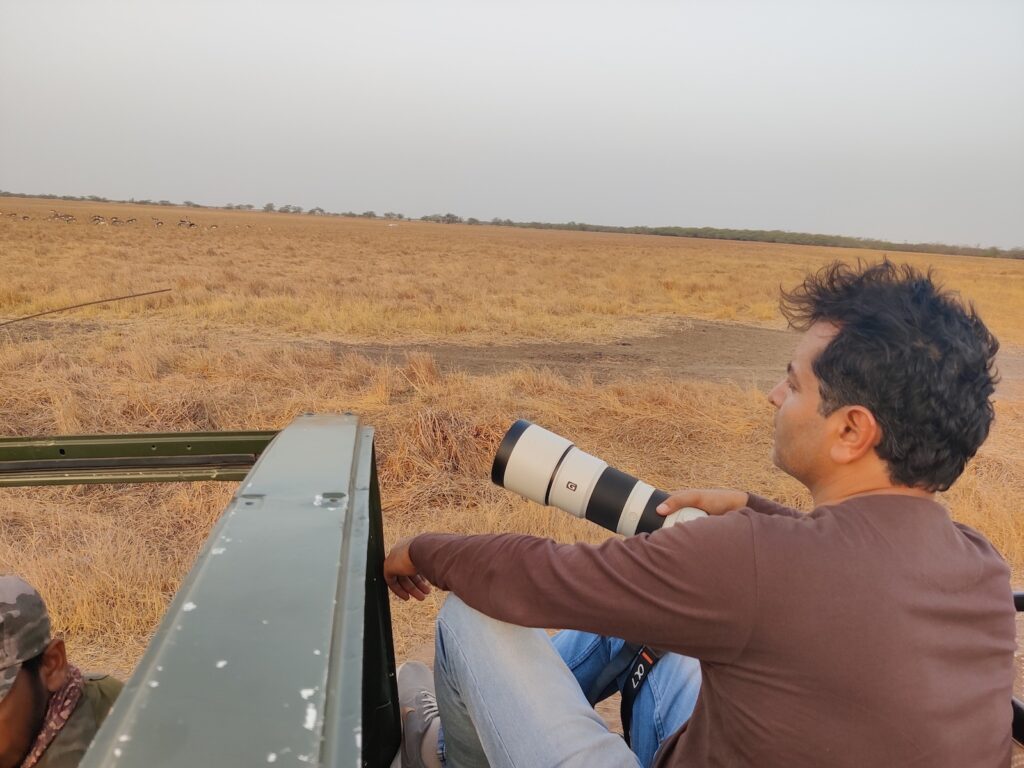
Jeep Safari in Velavadar National Park
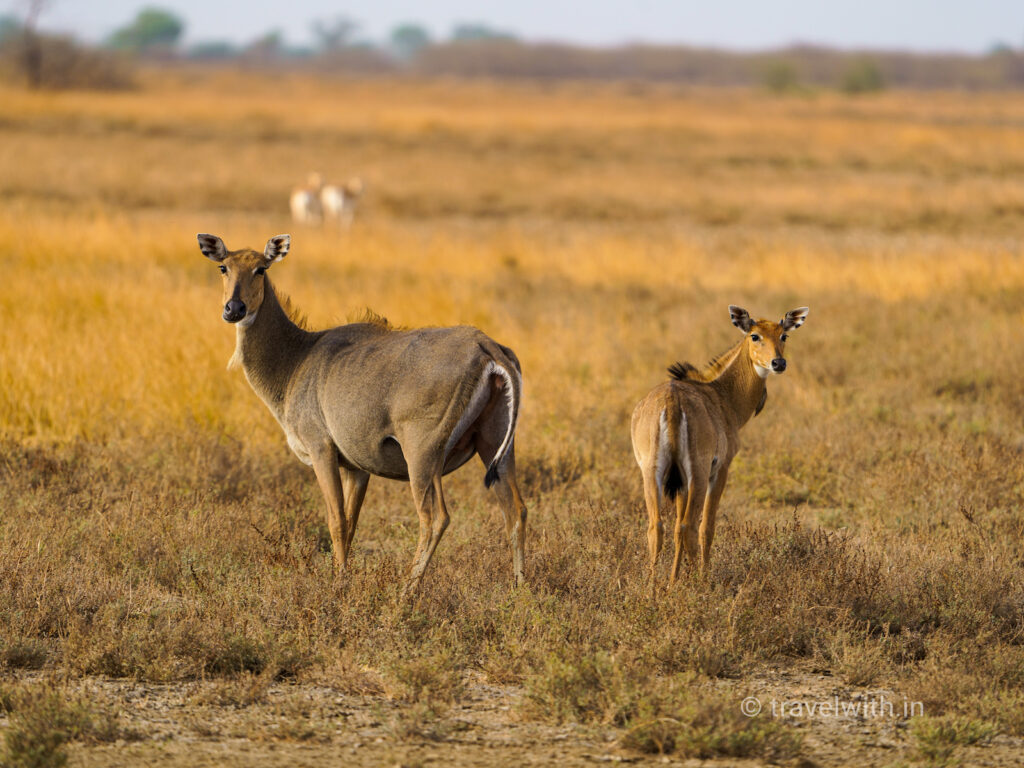
A female Nil Gai (Blue bull) and Calf
The winter months (October to March) are the best time to be in the Park if you can’t stand the hot and dusty summer months. It is in winter when the grasses in the national park are lush green and tall and wetlands full of water inviting migratory birds from all over the world. The best way to see the Park’s bio-diversity is in open top jeeps with a local guide.
The Forest department also allows tourists to take their personal cars inside the Park along with a guide however, if you really want to see the wildlife (and do photography) then pick the open top jeeps as your mode of transportation for safaris.
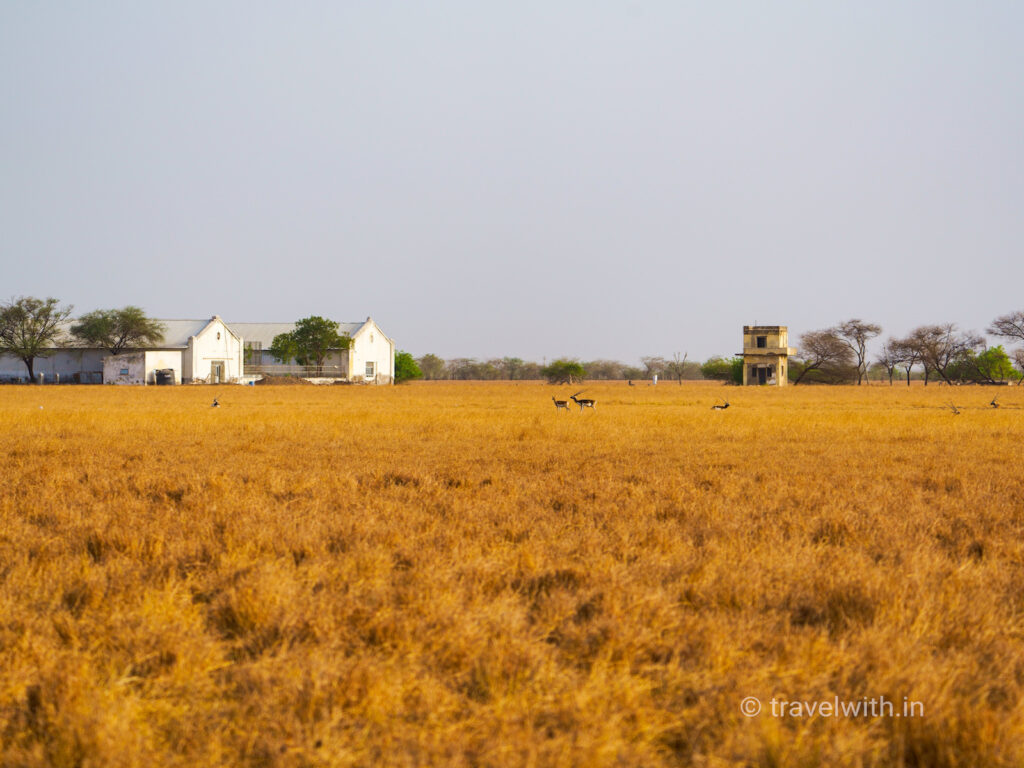
Blackbuck courtship. Let the best buck win. Male blackbucks
(sitting) waiting for the female to enter their territory
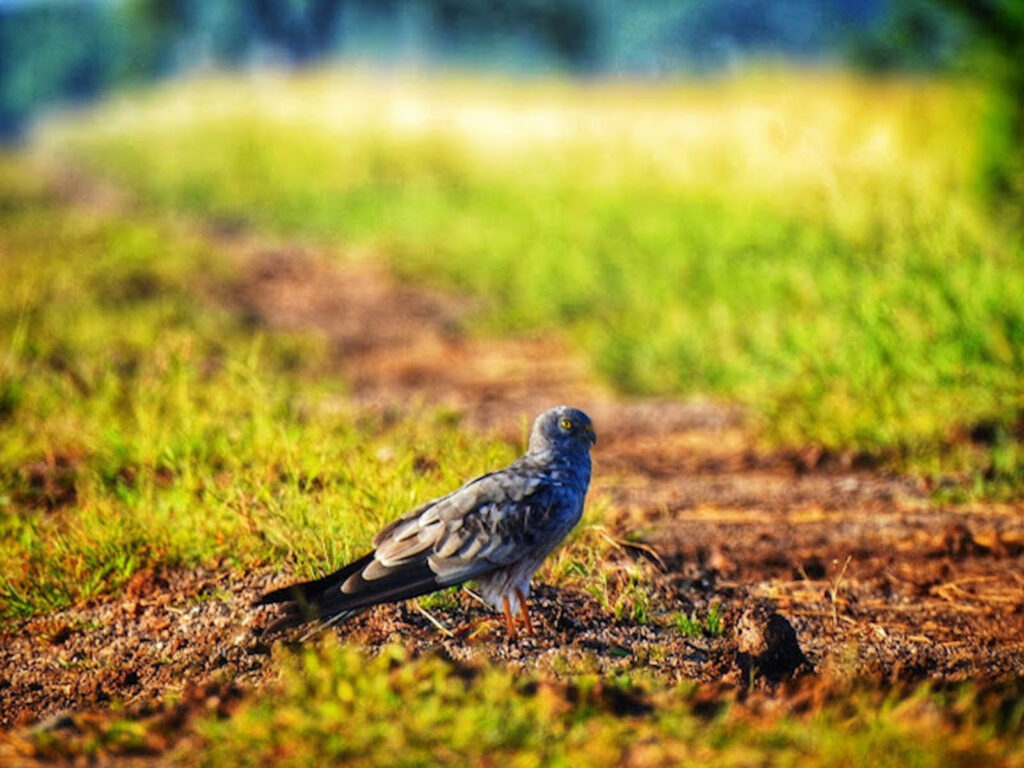
Montagu Harrier – photo by Vishal Velavadar
Winter season is when thousands of harriers and other birds of prey visit and roost inside the national park. During the day they forage for locusts, other insects and birds in the surrounding agricultural fields and come dusk, they make it back in the safer environs of BNP. Parts of the national park where harriers are known to roost are cordoned off by the Forest Department so as to minimize disturbance caused by visitors during safaris.
The hot, dry and dusty summer months (April to June) are also not a bad time to visit the national park. It is less crowded than the winter months giving you quality one-on-one time with the wildlife. With the grasslands losing most of their green cover, you can see further and better. This means spotting a pack of wolves and herds of its favorite prey the blackbucks, becomes much easier.
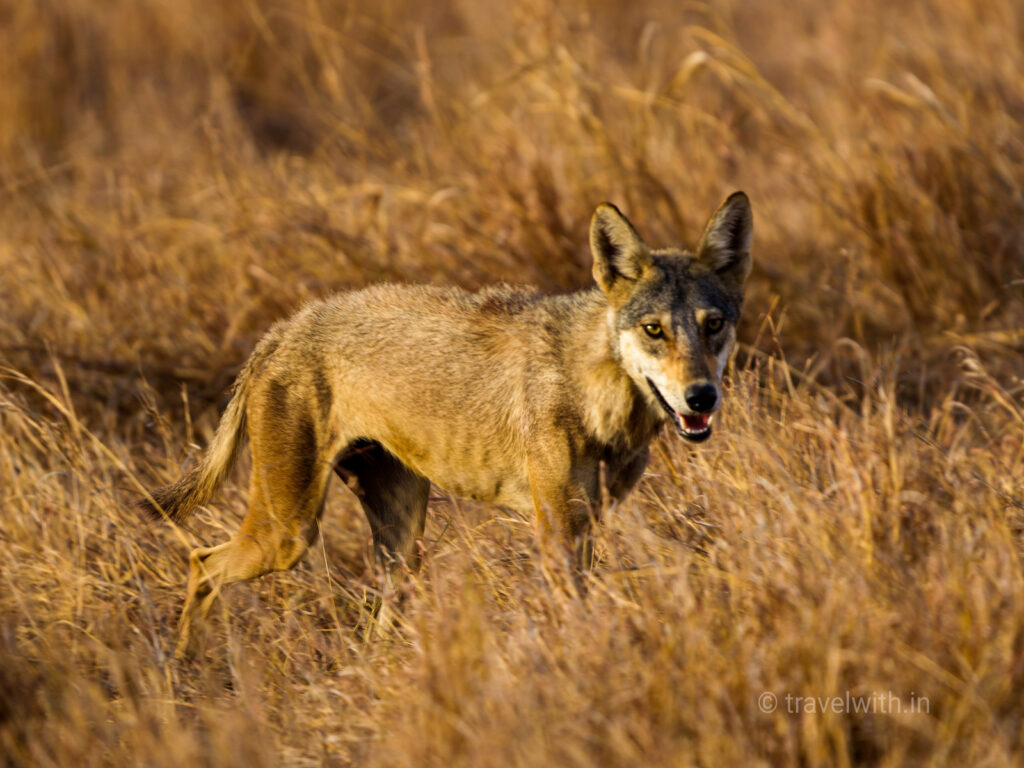
Indian Grey Wolf
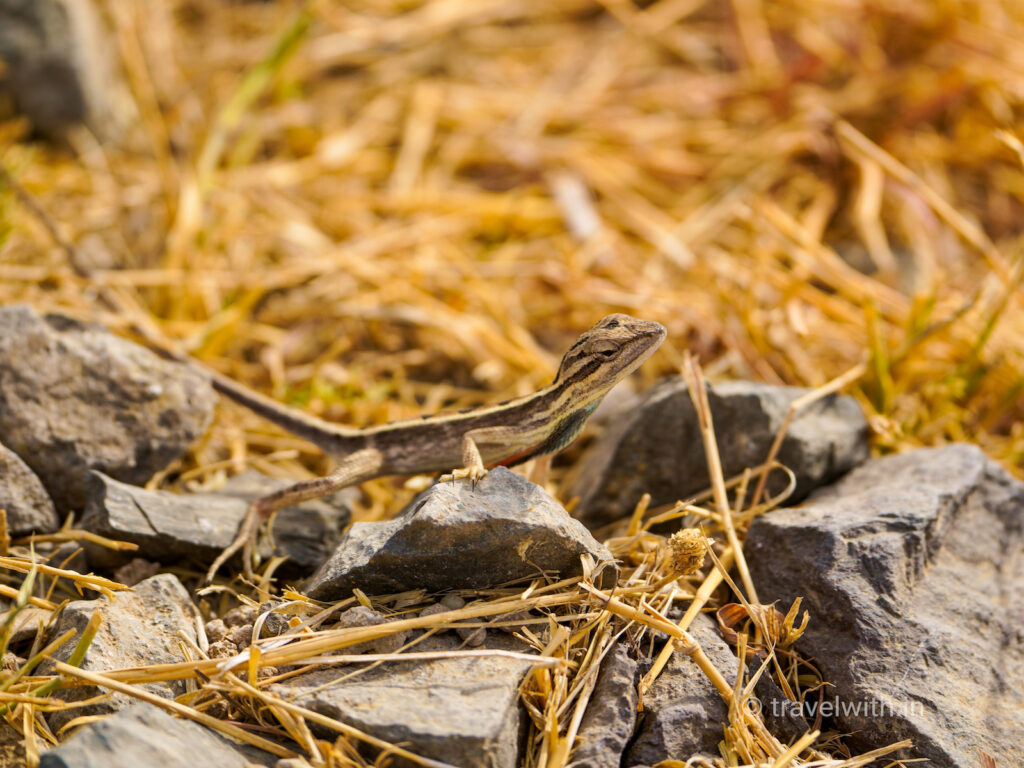
Fan-throated Lizard
Summer is also when you get to see the Lesser Florican or as locals call it the Khadmor meaning the grass peacock. The Lesser Florican migrates to BNP and breeds in the Park in the monsoon with courtship starting late summer. The male has a very unusual mating display which consists of a vertical display leap up to a height of about two meters. It is said that there are just about 150 individuals left of this species in the wild. I have yet to see one in the wild.
This national park is very close to the Gulf of Khambat and is a 3 hour drive from Ahmedabad and a 3-4 hour drive from Rajkot. The Park has a couple of hotels in it’s periphery, both are privately run. A visit to BNP for 2-3 nights is ideal for those of you planning to head to Gir National Park.
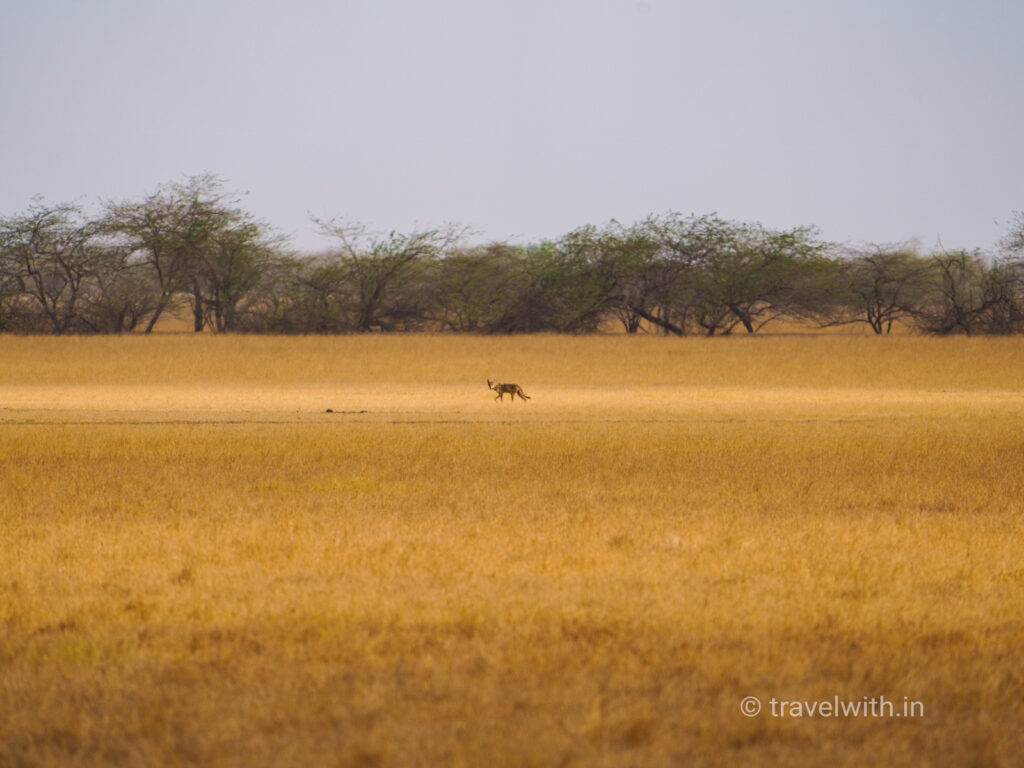
One of the last remaining grasslands in India
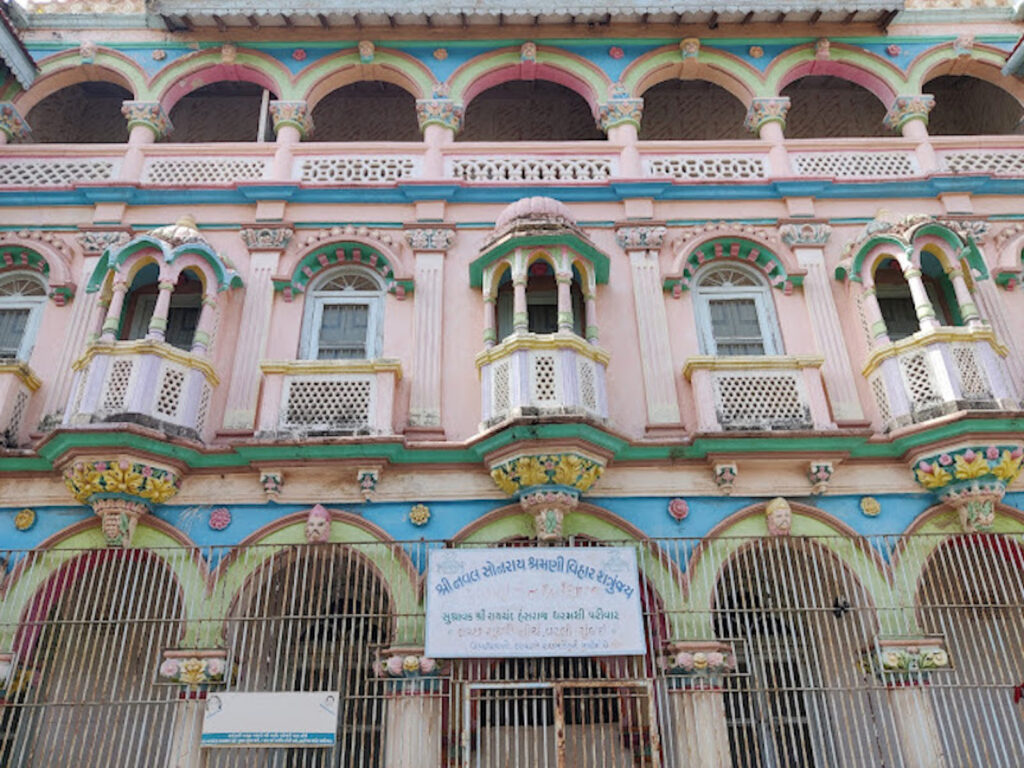
Palitana’s Heritage Dharamshalas
On the way to Gir, you can also visit the Jain temple town of Palitana. The ancient and architecturally rich temples are a 4,200 step walk up a mountain but if you’re not willing to do that then you can go visit the heritage dharamshalas (mansions built for pilgrims in a mix of Gothic and Indian architectural styles) created by wealthy Jain merchants more than a century ago. Most of the mansions are locked up, some are in ruins while others are still very well preserved. See them before they too become victims to modern ugly construction.
